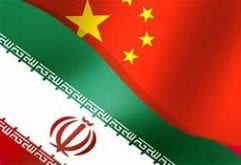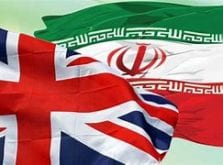Al-Monitor – After months of steep falls in value, the Iranian rial enjoyed a massive rebound Oct. 1-2, rallying 30% against foreign currencies. The open market rate of the US dollar, which had jumped up to around 190,000 rials last week, settled as low as 130,000 rials on Oct. 2.
Amateur videos showed massive crowds of ordinary Iranians on the streets in Tehran and other big cities trying to find money changers who would buy their hard currency, as fears grew that the rial may weaken.
Yet, to many, the question was how the turnaround happened so fast. Hardline Kayhan daily went this the headline: “Dollar in free fall after missile attack, execution orders and suspension of FATF bill.”
The paper argued that a missile attack by the Islamic Revolutionary Guard Corps (IRGC) in the early hours of Oct. 1 targeting Islamic State positions in Syria — in retaliation for the Sept. 22 attack on a military parade in the southwestern city of Ahvaz — pushed up the value of the national currency.
The second contributing factor, according to Kayhan, was the death penalties issued against three people found guilty of economic corruption and manipulating the Iranian currency and gold markets. One of those three was the so-called “Sultan of gold coins,” a nickname used by Iranian media and officials for a business tycoon believed to have gained massive fortunes by buying over 250,000 gold coins from the market, thus taking control of prices.
But not everyone agreed with Kayhan’s third explanation for the rial’s sudden recovery. Indeed, in the eyes of the moderates and Reformists, the jump was rather due to the prospect of controversial legislation designed to counter money laundering and terrorism financing in line with the action plan set out by the Financial Action Task Force (FATF) finally being passed. The analysis here is that since the Iranian parliament is expected to ratify relevant bills, a positive response from FATF could facilitate banking relations with Europe.
“It’s now the parliamentarians’ turn,” wrote Iran’s Ambassador to the United Kingdom Hamid Baeidinejad on his Twitter account. He urged lawmakers to pass FATF-related bills to destroy the “artificial bubble” in the hard currency market.
Almost all Iranian papers welcomed the rial’s jump. On its front page, Javan — affiliated with the IRGC — portrayed the greenback as a clown. Kelid, a moderate paper, reported that the open-market dollar witnessed a wide margin between 110,000 to 140,000 rials. Daily Iran, representing the official stance of President Hassan Rouhani’s administration, explained the rial rebound as the result of “the rush injection of home-kept dollars into the market.”
“Dollar loses breath,” wrote Tejarat, which focuses mainly on economic news. The paper said a recent meeting between Rouhani, the judiciary chief and the parliament speaker on the currency market led to the rial’s boost. Arman predicted that the dollar plunge will continue even further.
But not all Iranians seem to share the media’s stance. Many accuse the government of manipulating the currency market, or looking the other way as moneychangers take control of prices. “In a way, the government acted like an impetus to the jump in the dollar value … due to its huge budget deficit. It kept a greedy eye on this to add it to its currency inventory,” an economic expert was quoted as saying by Kayhan.
And yet more pessimistic interpretations could be dug out from social media. “The state intentionally pushed up the dollar value by a factor of four, distributed the hard currency in the market and earned whopping amounts [in rials]. Now it is bringing down the prices of the same dollars and buying them back from people for half the price they paid for it,” one user tweeted, describing the situation as “the dirtiest theft in history.”
Following the US withdrawal from the Joint Comprehensive Plan of Action in May, Iranians have been stocking up on hard currency for rainy days to come — one of them being Nov. 4, when sanctions targeting banking and oil exports will formally resume. But this week’s rial rally might alleviate fears and bring hope that the country’s economy is indeed not on its knees.
 Shabtabnews In this dark night, I have lost my way – Arise from a corner, oh you the star of guidance.
Shabtabnews In this dark night, I have lost my way – Arise from a corner, oh you the star of guidance.


